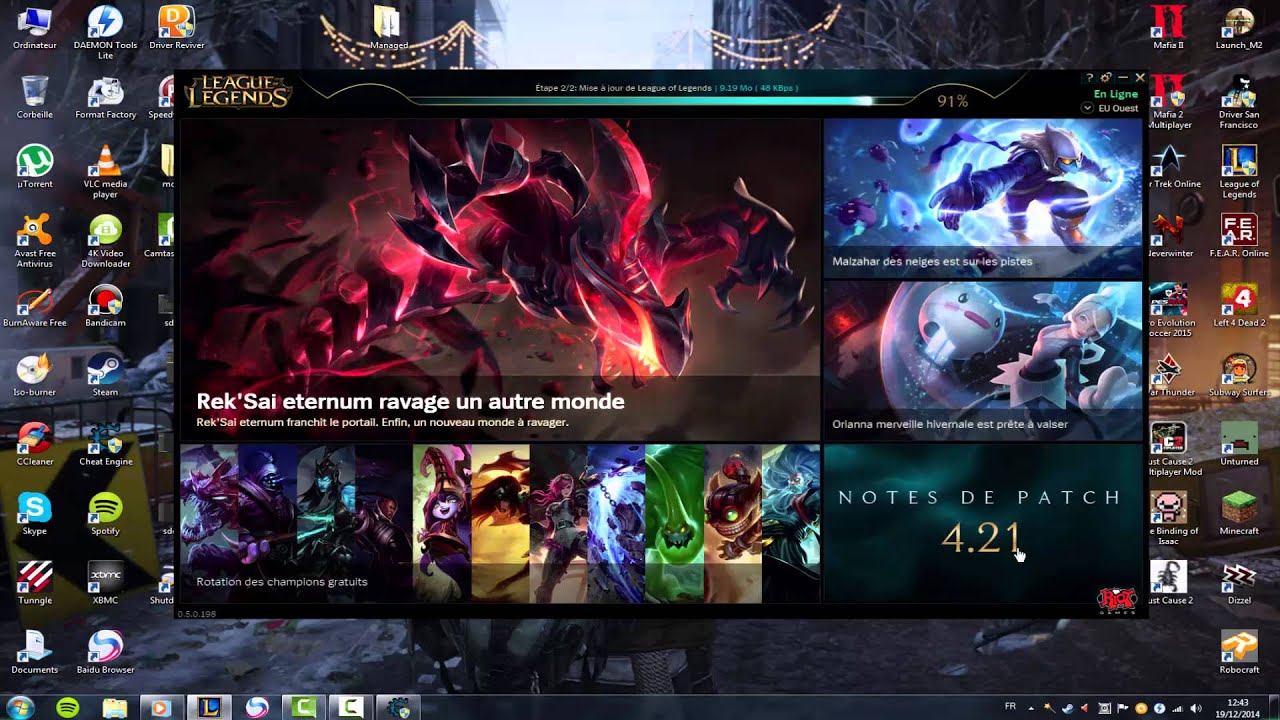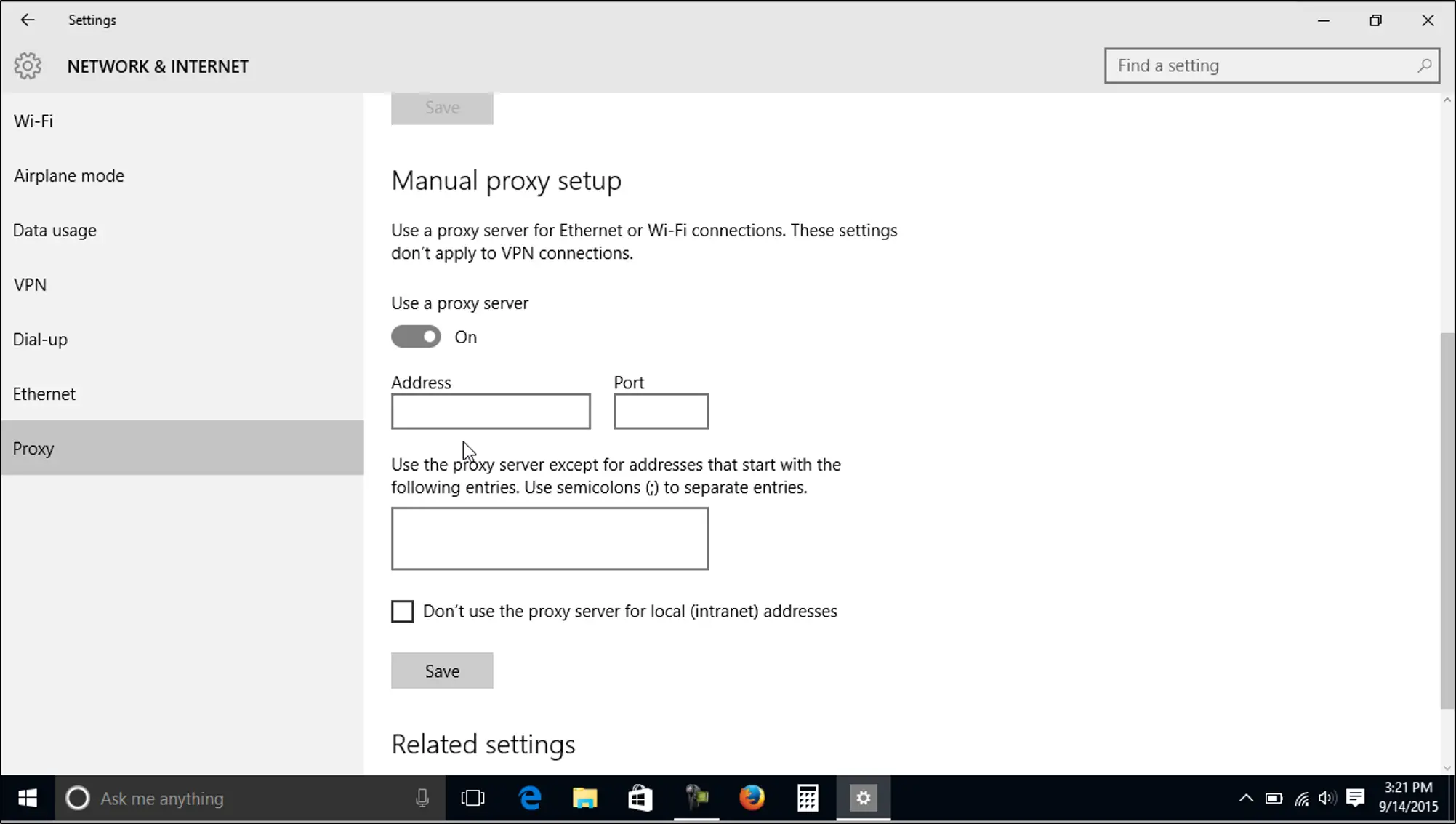Introduction
A proxy server is an intermediary between your computer and the internet. It acts as a gateway, forwarding your requests to websites and receiving the responses on your behalf. Proxy servers are commonly used in corporate networks to enhance security and control internet access.
However, sometimes the proxy server on your laptop can cause issues, preventing you from accessing the internet or experiencing slow browsing speeds. When faced with a proxy server problem, it is crucial to troubleshoot and resolve the issue to restore normal internet functionality.
In this article, we will guide you through various methods to fix a proxy server issue on your laptop. We will discuss common symptoms of a proxy server problem and provide step-by-step instructions to troubleshoot and resolve the issue. Whether you are using Windows or Mac, these methods are applicable to most laptop devices.
It is essential to mention that the methods outlined in this article are targeted towards resolving issues related to proxy servers on laptops specifically. If you are experiencing proxy server problems on other devices or networks, the steps may vary.
Before diving into the solutions, it is important to note that certain situations may require assistance from your network administrator. If you are using your laptop in a corporate or educational environment, it is recommended to consult with the IT department or relevant personnel before making any changes to proxy server settings.
Now let’s explore the symptoms of a proxy server issue, so you can determine if your laptop is affected and proceed with the appropriate troubleshooting steps.
Symptoms of a Proxy Server Issue
Identifying the symptoms of a proxy server issue is the first step towards resolving the problem. Here are some common signs that indicate you may be experiencing difficulties with your laptop’s proxy server:
1. Slow Internet Connection: If you notice a significant decrease in internet speed, where web pages take longer to load or downloads are unusually slow, it could be due to a proxy server issue.
2. Unable to Access Certain Websites: Proxy servers can sometimes block access to specific websites or restrict certain content. If you encounter error messages stating that the website is unavailable or blocked, this could be a sign of a proxy server problem.
3. Constant Proxy Authentication Prompts: You may find that your laptop repeatedly asks for proxy server authentication credentials, even after entering them correctly. This ongoing prompt is an indication of a proxy server issue.
4. Unexpected Browser Settings Changes: If your browser’s settings, such as the homepage or default search engine, have been modified without your knowledge or consent, it could be a result of a proxy server issue.
5. Network Connection Errors: When trying to establish a network connection, you may encounter error messages such as “Proxy Server Connection Failed” or “Unable to Connect to the Proxy Server.” These errors imply that your laptop’s proxy settings need attention.
6. Unresponsive Proxy Settings: In some cases, you may attempt to change or disable the proxy server settings on your laptop, but the changes do not take effect. This indicates an issue with the proxy server configuration.
If you experience one or more of these symptoms, the chances are high that your laptop is affected by a proxy server issue. By recognizing these signs, you can proceed with the appropriate troubleshooting methods to resolve the problem.
Method 1: Reset Internet Options
Resetting the internet options on your laptop can help resolve proxy server issues and restore normal internet functionality. Here are the steps to follow:
1. Open the Control Panel on your laptop. You can usually access it by searching for “Control Panel” in the Start menu or by right-clicking on the Windows icon and selecting Control Panel.
2. In the Control Panel, locate and click on the “Internet Options” or “Network and Internet” option. This will open a new window with various internet settings.
3. Within the Internet Options window, navigate to the “Advanced” tab. Look for the “Reset” button, usually located at the bottom of the window. Click on it.
4. A confirmation prompt will appear, asking if you are sure you want to reset the internet settings. Select “Reset” to proceed.
5. After clicking “Reset,” the process may take a few moments. Once completed, a notification will appear indicating that the settings have been reset to their default values.
6. Finally, click on “OK” to save the changes and close the Internet Options window.
Once you have reset the internet options, restart your laptop and check if the proxy server issue has been resolved. Test your internet connection by browsing various websites and verifying that they load without any issues.
If resetting the internet options does not fix the proxy server problem, proceed to the next method for further troubleshooting.
Method 2: Remove Proxy Server Settings
If resetting the internet options did not resolve the proxy server issue on your laptop, you can try removing the proxy server settings altogether. Follow these steps:
1. Open the Control Panel on your laptop by searching for “Control Panel” in the Start menu or right-clicking on the Windows icon and selecting Control Panel.
2. In the Control Panel, navigate to the “Internet Options” or “Network and Internet” option.
3. Within the Internet Options window, go to the “Connections” tab and click on the “LAN settings” button.
4. In the Local Area Network (LAN) Settings window, make sure that the “Use a proxy server for your LAN” option is unchecked. If it is checked, uncheck it and click on “OK” to save the changes.
5. Next, return to the Internet Options window by clicking “OK.”
6. Restart your laptop to apply the changes.
After restarting, check if the proxy server issue has been resolved. Open your web browser and attempt to access websites to verify that the internet connection is functioning properly.
If removing the proxy server settings does not fix the issue, proceed to the next method for further troubleshooting.
Method 3: Disable Proxy Server using Command Prompt
If the previous methods did not resolve the proxy server issue on your laptop, you can try disabling the proxy server using the Command Prompt. Here’s how:
1. Press the Windows key + R to open the Run dialog box.
2. Type “cmd” and press Enter to open the Command Prompt.
3. In the Command Prompt window, type the following command and press Enter:
reg add “HKCU\Software\Microsoft\Windows\CurrentVersion\Internet Settings” /v ProxyEnable /t REG_DWORD /d 0 /f
This command will disable the proxy server settings on your laptop.
4. Close the Command Prompt.
Restart your laptop to apply the changes. Once your laptop has rebooted, check if the proxy server issue has been resolved. Test your internet connection by opening a web browser and accessing various websites.
If disabling the proxy server using the Command Prompt does not fix the issue, proceed to the next method for further troubleshooting.
Method 4: Update Network Adapter Drivers
Outdated or incompatible network adapter drivers can cause proxy server issues on your laptop. Updating the drivers can help resolve the problem. Follow these steps:
1. Press the Windows key + X on your keyboard and select “Device Manager” from the menu that appears. This will open the Device Manager window.
2. In the Device Manager, expand the “Network adapters” category to view the list of network adapters installed on your laptop.
3. Right-click on the network adapter that is currently in use and select “Update driver” from the context menu.
4. A new window will appear, giving you the option to automatically search for updated drivers or browse your computer to manually install the drivers.
If you choose the automatic option, Windows will search for the latest drivers online and install them for you. If you prefer the manual option, you should download the latest driver from the manufacturer’s website and follow their instructions for installation.
5. Once the driver update process is complete, restart your laptop to apply the changes.
After rebooting, check if the proxy server issue has been resolved. Test your internet connection by opening a web browser and accessing various websites to verify that the connection is stable and functioning properly.
If updating the network adapter drivers does not fix the issue, proceed to the next method for further troubleshooting.
Method 5: Check for Malware
Malware infections on your laptop can disrupt the normal functioning of various components, including the proxy server settings. It is important to check for malware and remove any infections to resolve the proxy server issue. Follow these steps:
1. Install reputable antivirus or anti-malware software on your laptop if you haven’t already done so. Ensure that it is up to date with the latest virus definitions.
2. Run a full system scan using the antivirus or anti-malware software. Allow the scan to complete, as it will thoroughly check your laptop for any malicious software.
3. If any malware is detected, follow the instructions provided by the antivirus or anti-malware software to remove the infections. This may involve quarantining or deleting the detected files.
4. After removing the malware, restart your laptop to complete the removal process.
Once your laptop has rebooted, check if the proxy server issue has been resolved. Open your web browser and attempt to access websites to verify that the internet connection is functioning properly.
If checking for malware and removing any infections does not fix the proxy server issue, proceed to the next method for further troubleshooting.
Method 6: Contact Your Network Administrator
If none of the previous methods have successfully resolved the proxy server issue on your laptop, it may be necessary to seek assistance from your network administrator. Network administrators are experienced professionals who can help diagnose and resolve complex networking issues. Here’s what you can do:
1. Identify the contact information for your network administrator. This could be an IT department within your organization or a designated network administrator for your home network.
2. Reach out to your network administrator via phone, email, or in person. Explain the proxy server issue you are facing and provide any relevant details such as error messages or symptoms you have observed.
3. Follow any instructions provided by the network administrator. They may request additional information, ask you to perform certain actions on your laptop, or schedule a remote session to troubleshoot the issue directly.
4. Cooperate with the network administrator throughout the troubleshooting process. Be open to their suggestions and provide prompt feedback on any changes or improvements you notice.
5. Allow the network administrator to guide you through advanced troubleshooting steps or make any necessary changes to network settings or configurations.
By reaching out to your network administrator, you can ensure that your proxy server issue is handled by a knowledgeable professional with expertise in networking. They will be able to provide customized guidance based on the specific setup of your network and resolve any underlying issues that may be causing the proxy server problem.
Keep in mind that contacting your network administrator may be most applicable for users in a corporate or educational environment. If you are using your laptop on a personal network, you may need to consult with your internet service provider (ISP) for assistance.
Conclusion
Dealing with a proxy server issue on your laptop can be frustrating, but with the right troubleshooting methods, it is possible to resolve the problem and restore normal internet functionality. In this article, we have provided six methods to help you fix a proxy server issue:
1. Resetting internet options: This can help resolve issues related to the proxy server settings in your web browser.
2. Removing proxy server settings: By disabling the proxy server settings, you can eliminate potential conflicts and restore a direct internet connection.
3. Disabling the proxy server using Command Prompt: This method allows you to disable the proxy server settings directly through the Command Prompt.
4. Updating network adapter drivers: Outdated or incompatible drivers can cause proxy server issues, so updating them can help resolve the problem.
5. Checking for malware: Malicious software can interfere with the proxy server settings, so performing a thorough scan and removing any infections can help restore normal functionality.
6. Contacting your network administrator: If all else fails, reaching out to your network administrator for assistance can help diagnose and resolve complex proxy server issues.
Remember, when troubleshooting proxy server issues, it is important to follow the specific steps for your laptop’s operating system and make changes with caution, especially in corporate or educational environments where network policy restrictions may apply.
We hope that these methods have provided you with the necessary guidance to troubleshoot and fix any proxy server issues on your laptop. By implementing these solutions, you can regain smooth and uninterrupted internet browsing. If you encounter ongoing difficulties or require further assistance, don’t hesitate to seek professional help from your network administrator or IT support team.

























